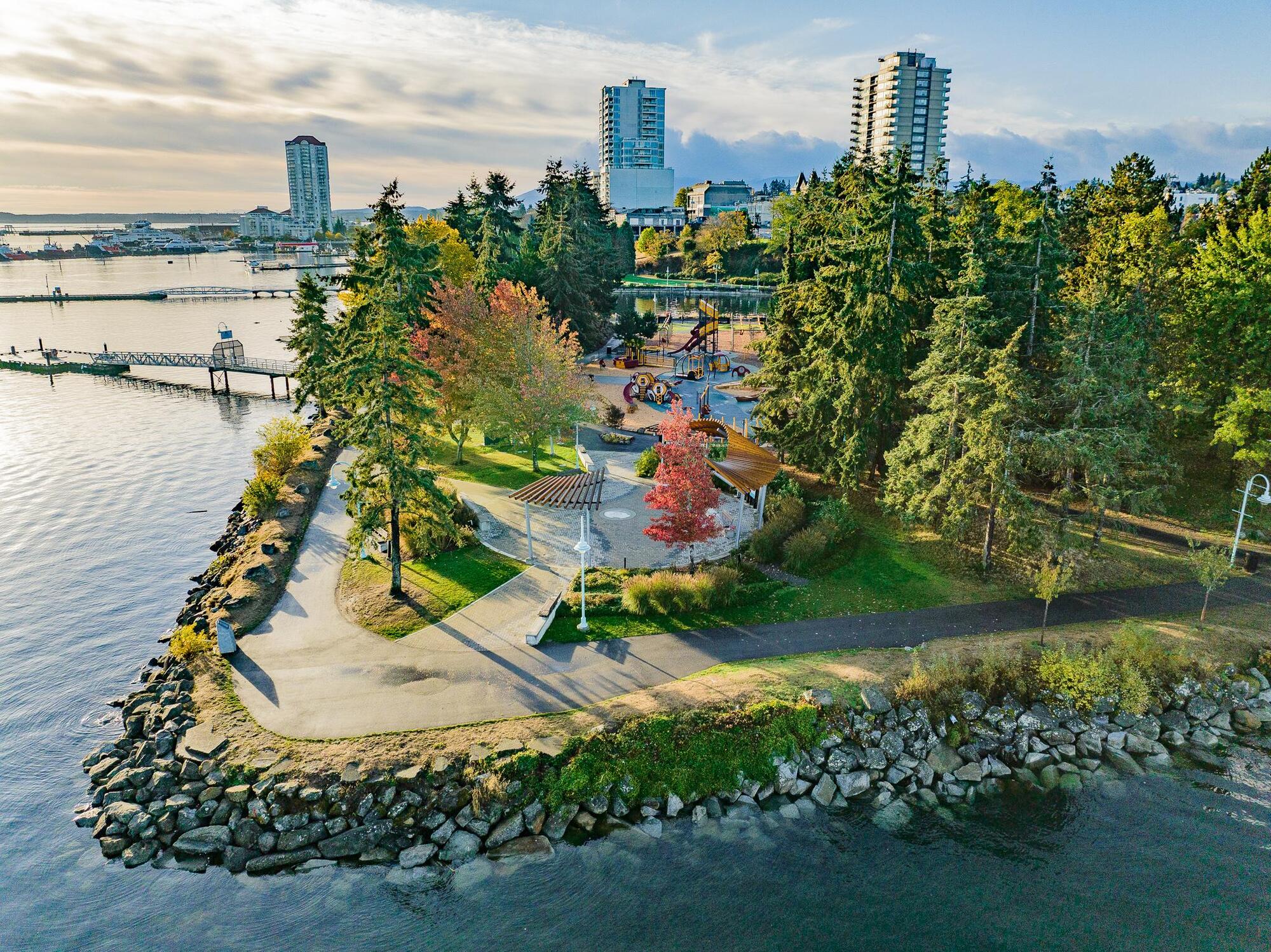In 2024, Nanaimo earned a place on Carbon Disclosure Project’s (CDP) Environmental A-List—an international benchmark of climate leadership and transparency.
This wasn’t luck. It was the product of years of deliberate policy work, public planning, and tough conversations about what kind of city this needs to be in a changing climate.
Nanaimo is one of just eight Canadian cities to earn a spot on CDP’s A-List—an achievement reached by only 15% of the 752 cities scored.
For a mid-sized city without the deep pockets of Toronto or Vancouver, this level of climate leadership is hard-won. But it matters—because it shows that meaningful progress isn’t reserved for the biggest players. Nanaimo is proving what’s possible for cities that punch above their weight.

What the A-List Means
CDP (formerly the Carbon Disclosure Project) evaluates cities based on six key factors:
- Public disclosure of environmental data
- A city-wide greenhouse gas emissions inventory
- Clear emissions reduction targets that are ideally net-zero by 2050
- A published climate action plan
- A risk and vulnerability assessment
- A climate adaptation plan
Only cities that meet all six criteria – and show evidence of implementation – are considered. In 2024, just 13% of reporting cities made the cut.
Nanaimo was one of them.
This isn’t just about looking good on paper. The A-List signals that Nanaimo is taking climate risk seriously and backing it up with action.
What Other Cities Are (and Aren’t) Doing
Vancouver and Toronto have long been climate frontrunners, but their scale gives them access to resources most cities can’t dream of.
Victoria, often assumed to be climate-forward, didn’t make it either.
That puts Nanaimo in rare company—and suggests that what’s happening here could become a model for other mid-sized cities.
How We Got Here
The turning point was Nanaimo ReImagined, the city’s official community plan adopted in 2022. It restructured how the city talks about growth, land use, and climate in a way few mid-sized cities have managed.
Instead of treating climate policy as a silo, ReImagined weaves it into zoning, housing, transportation, and equity. It prioritizes compact, walkable neighbourhoods over sprawl. It commits to protecting natural ecosystems. And it puts adaptation—dealing with heatwaves, flooding, and rising insurance costs—on the same level as mitigation.
This kind of systemic thinking is rare. And it’s what caught CDP’s attention.
Not Flashy, but Effective
Nanaimo isn’t deploying AI-driven climate dashboards or piloting vertical forests. What it is doing is the hard, slow, often invisible work that makes real change possible:
- It has a full emissions inventory—many cities still don’t.
- It’s set climate targets aligned with limiting warming to 1.5°C.
- It has a published plan to adapt to rising climate risks.
- It reports transparently, so residents and investors alike can track progress.
For a city its size, that’s unusual. For a city that still relies heavily on cars, has legacy sprawl, and is dealing with rapid population growth, it’s remarkable.
Why It Matters
Climate leadership is often framed around innovation. But the truth is, implementation matters more than inspiration. And implementation is where cities usually stall—especially smaller ones with tighter budgets and fewer staff.
Nanaimo’s inclusion on the A-List suggests it’s doing something different: aligning political decisions with long-term climate strategy. It’s treating emissions and climate adaptation as foundational—not optional.
That builds credibility. It also builds economic resilience. As insurers, lenders, and investors increasingly screen for climate risk, cities like Nanaimo that show their work will be better positioned to attract funding, development, and people.
But Let’s Be Clear: This Isn’t Victory
Nanaimo is still car-dependent. Transit coverage is limited. Emissions from transportation and buildings are still high. And while new development is supposed to be climate-aligned, legacy sprawl continues to shape how people live and move.
Extreme heat, wildfire smoke, and rising water threaten infrastructure and public health. And like many BC cities, Nanaimo is grappling with a housing crisis that makes long-term planning harder.
Being on the A-List is not a signal that Nanaimo has solved the climate crisis. It’s a signal that the city has acknowledged the scale of the challenge—and is trying to meet it head-on.
If Nanaimo can stay focused, transparent, and accountable, it could lead not just in planning—but in outcomes. And that’s what matters now. ■